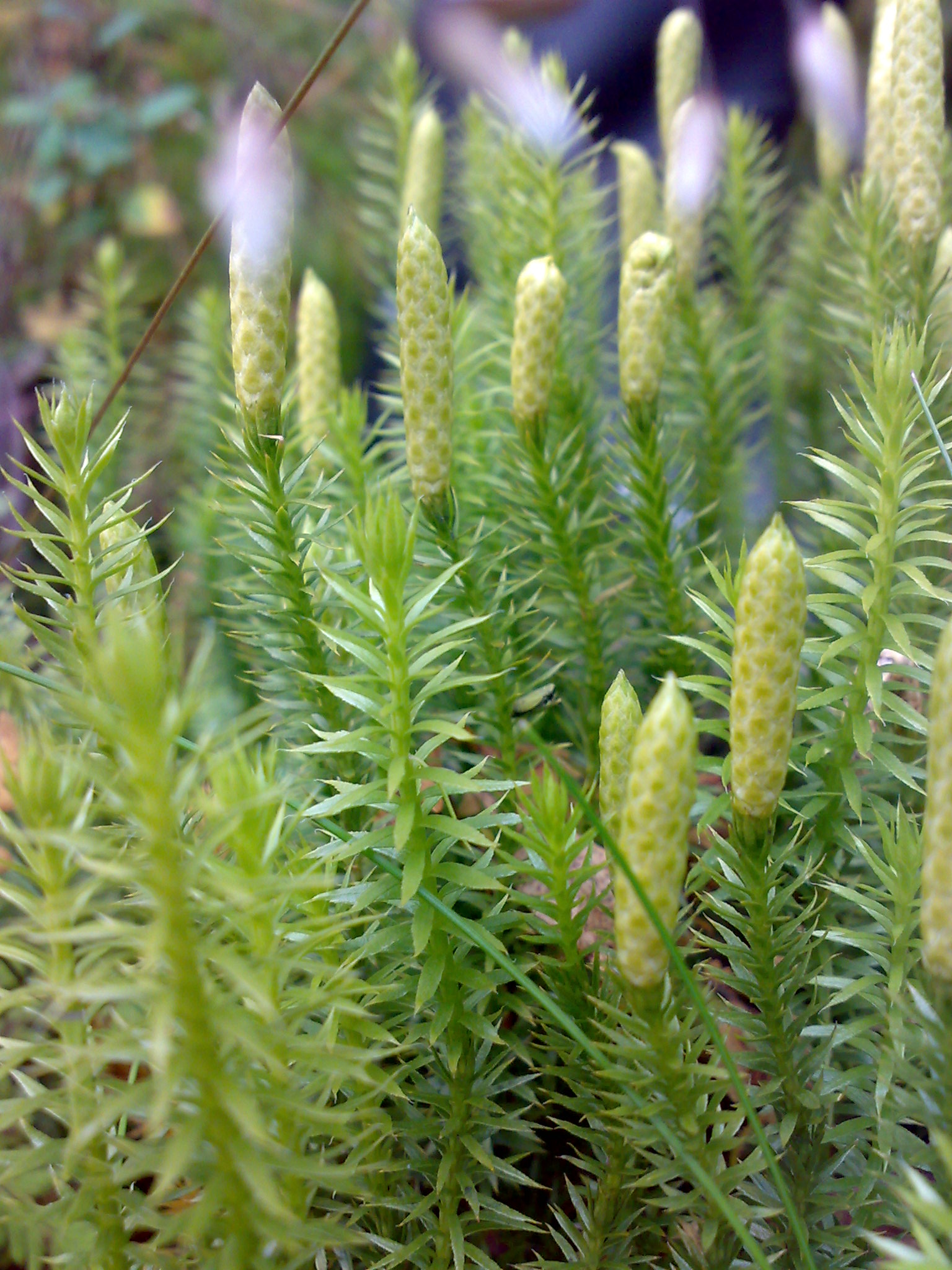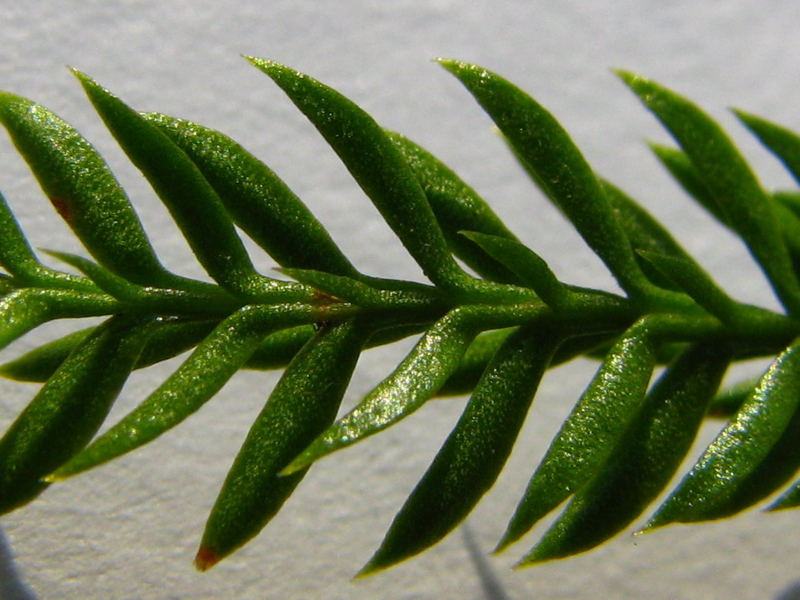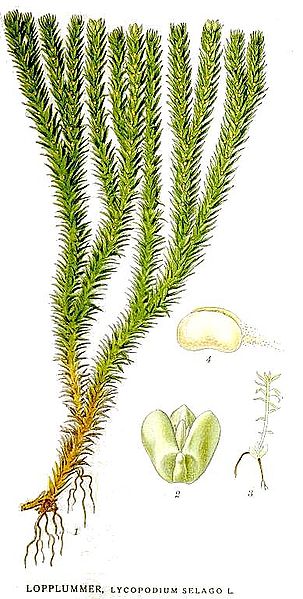Club mosses (Class Lycopodiopsida) represent the oldest living lineage of vascular plants. Club mosses are not true mosses due to the presence of tracheids: elongated, hollow cells with pits concentrated at the ends which allow transportation of water to cells higher up in the plant that is allowed by capillary action alone. Club mosses differ from other vascular seedless plants due to the presence of microphylls, very small leaves that only have a single vein. Most other plants have megaphylls, leaves with more than one vein. Like all vascular plants, club mosses reproduce via alternation of generations. The most primitive vascular plants were similar to non-vascular plants in that they all reproduce via spores, single-celled zygotes. Unlike bryophytes, vascular seedless plants reproduce via alternation of generations. Similar to animals, the vegetative tissues are diploid, having two sets of chromosome, one from each parent, while the sperm and egg undergo meiosis to become haploid.




